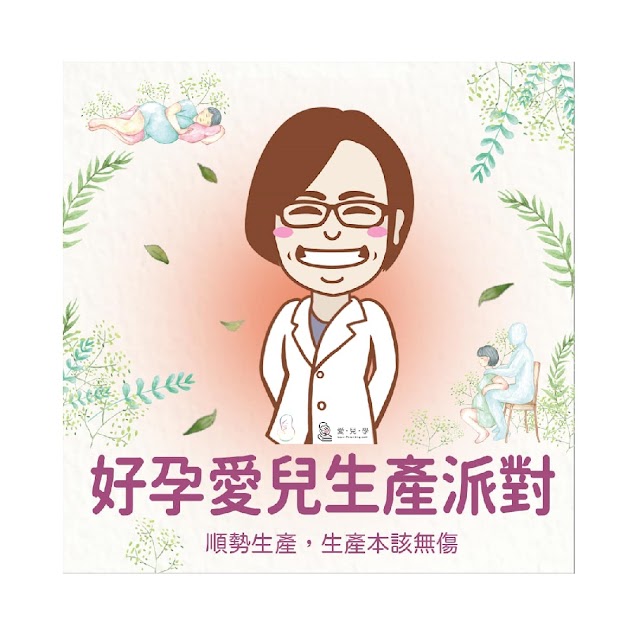產婆,舊稱穩婆,有稱接生婆,或直接稱呼阿婆。日治時期前的臺灣傳統社會,通常會在產痛無法忍耐時才把阿婆叫來。有時甚至是寶寶出來了,才叫阿婆來斷臍。所以「斷臍」是生產過程的最後關鍵,也被視為生產技術之一。雖然阿婆與她們相處時間不長,但產婦通常對斷臍的情景都歷歷在目。當時是先綁、剪斷、抹麻油。有些產婦回憶除了麻油還會撒點鋁粉(消毒作用)。所以當時對於生產的認知,接生者就是剪臍帶的人。
日治初期對於斷臍與破傷風連結帶有偏見的研究,卻讓傳統產婆背上了導致新生兒破傷風的黑鍋,但這全然是誤會一場。即使後來整體生活環境的改善也是很重要的因素,卻沒被列入考量。若就中國傳統醫書來看,這樣的斷臍方式並無不妥,反而有憑有據。「麻油」自古以來,有其殺菌預防感染的療效。比較1906年日本與台灣的新生兒死亡率,台灣低於日本,數值與法國比利時開始大量採用受過生醫教育的產婆之前相當。
Wu, Chia-Ling. 2010. "Have Someone Cut the Umbilical Cord: Women's Birthing Network Knowledge and Skills in Colonial Taiwan". pp 160-181 in Health and Hygiene in Chinese East Asia
=============================================
隨著時代演進,生產進了醫院,通常是由接生者斷臍,而且是寶寶出生後立即斷臍。
隨著時代演進,生產進了醫院,通常是由接生者斷臍,而且是寶寶出生後立即斷臍。
If after delivery, the infant is placed at or below the level of the vaginal introitus for 3 minutes and fetoplacental circulation is not immediately occluded by clamping the cord, and average of 80mL of blood may be shifted from the placenta to the infant (Yao and Lind, 1974). One benefit to be derived from placental transfusion is that the hemoglobin is 80mL of placental blood that shifts to the fetus eventually provides about 50 mg of iron, which reduces the frequency of iron-deficeincy anemia later in infancy. In the presence of accelerated destruction of erythrocytes, as occurs with maternal alloimmunization, the bilirubin formed from the added erythrocytes contributes further to the danger of hyperbilirubinemia. Although the theoretical risk of circulatory overloading from gross hyperbilirubinemia is formidable, especially in preterm and growth-retarded infants, addition of placental blood to the otherwise normal infants circulation ordinarily does not cause difficulty.
Our policy is to clamp the cord after first thoroughly clearing the airway, all of which usually takes about 30 seconds. The infant is not elevated above the introitus at vaginal delivery or much above the maternal abdominal wall at the time of cesarean delivery.
------ Williams Obsterics 21th edition
以上節錄這段是1999年我當住院醫師時,讀的21版威廉產科學教科書,對於斷臍時機的建議。儘管已知延遲斷臍時間至三分鐘,可以增加寶寶體內鐵質的存量,但基於後來可能造成寶寶黃疸過高需要照光,作者還是建議出生30秒內,清好呼吸道後(吸球或真空抽吸)立即斷臍。住院醫師訓練時,立即斷臍是醫院生產的常規,大家都這麼做,當時我還常陶醉於自己當助手時,在時間上與主治醫師配合得完美無瑕的斷臍。
2011年,刊載在《英國醫學期刊》的一篇 〈純母乳哺育六個月:證據有多充分?(Six months of exclusive breastfeeding: how good is the evidence?)〉質疑世界衛生組織一直以來對純母乳哺育至六個月大的的建議,引起軒然大波,吵得沸沸揚揚。後來世界衛生組織(WHO)、哺乳醫學會(Academy of breastfeeding medicine)、聯合國兒童基金會(UNICEF)都陸續針對這質疑提出聲明與建議,仍然保持純母乳哺育至六個月大,之後添加副食品的官方建議。在聯合國兒童基金會英國分部提出的反應與建議中,關於寶寶的缺鐵性貧血(iron deficiency anemia)(IDA)的討論:
IDA is strongly influenced by iron stores at birth(which is related to the mother’s iron status and length of gestation) and early cord cutting(which is still common and can reduce iron stores by up to 33%). IDA is also associated with poverty and deprivation. Ensuring that the mother is not anaemic and that cord cutting is delayed will in turn ensure that the baby’s own body stores and breastmilk will provide sufficient iron for over 6 months.
文中提到立即斷臍會減少寶寶鐵質存量達33%之多,但也將延遲斷臍這顆球又丟回給產科醫師。
到了2014年最新版的威廉產科學,對於斷臍時機的建議有沒有改變?
For term neonates, the timing of umbilical cord clamping remains debatable. A delay in umbilical cord clamping for up to 60 seconds may increase total body iron stores, expand blood volume, and decrease anemia incidence in the neonate(Andersson, 2011; Yao, 1974). This may be particularly valuable in populations in which iron deficiency is prevalent (Abalos, 2009). Conversely, and as discussed in Chapter 33(p.643), higher hemoglobin concentration increases risks for hyperbilirubinemia and extended hospitalization for neonatal phototherapy.(McDonald, 2008). Delayed cord clamping may also hinder timely and needed neonatal resuscitation. Fortunately, in general, delayed umbilical cord clamping compared with early clamping does not worsen Apgar scores, umbilical cord pH, or respiratory distress caused by polycythemia. Regarding maternal outcomes, rates of postpartum hemorrhage are similar between early and delayed clamping groups(Andersson, 2013). Fewer data are available regarding cord “milking”, in which the operator pushes blood through the cord toward the newborn. This maneuver appears safe and may be advantageous if rapid cord clamping is clinically indicated (Upadhyay, 2013)
The American College of Obstetricians and Gynecologists(2012c) has concluded that there is insufficient evidence to support or refute benefits from delayed umbilical cord clamping for term neonates in resource-rich settings. For preterm newborns, however, evidence supports delaying umbilical cord clamping to 30-60 seconds after birth. This opinion is also endorsed by the American Academy of Pediatrics (2013). Our policy is to clamp the cord after assessing the need to clear the airway, all of which usually requires approximately 30 seconds. The newborn is not elevated above the introitus at vaginal delivery or much above the maternal abdominal wall at the time of cesarean delivery.
(編按:還是建議30秒!)
以往生產過程對產婦的三個積極處置: 早期斷臍、使用子宮收縮劑、控制臍帶牽引,為的是縮短第三產程,減少產婦的失血。2013年Cochrane Databse review提出,對產婦來說延遲斷臍並不會增加產後出血的風險,新版教科書也採用了這樣的觀點。
那對寶寶來說,是增加鐵質存量重要?還是避免照光治療重要?在以往,對早產兒也以影響急救為由,主張馬上斷臍。近年的研究成果發現對早產兒來說,延遲斷臍可以減少寶寶的輸血、避免血壓過低、減少腦室出血(intraventricular hemorrhages) (IVH)的發生。那對足月寶寶呢?何以教科書中,對於在生產資源設備豐富的地方,就不做延遲斷臍的建議呢?缺鐵性貧血對寶寶神經發展影響很大,認知與行為發展都會受影響。目前已知,即便是沒有造成貧血的鐵質缺乏,都有可能影響到孩子的情緒反應、動作與認知的發展。而胎盤的血液中富含造血幹細胞(hematopoietic stem cells),延遲斷臍讓這些造血幹細胞到寶寶身上,對寶寶的好處是很多的。這些年對黃疸的重新認識與照光標準的改變,應該足以爭取足月健康兒的延遲斷臍,教科書卻不作出明確的建議。在另一章還特別增列婦產科醫師在產檢時,應該跟孕婦解釋儲存臍帶血的好處,讓人不免起疑,教科書作者是否該有利益衝突迴避的聲明呢?
——————————————————————————————
參考資料
1. Late vs early clamping of the umbilical cord in full-term neonates, Eileen K.Hutton, Eman S. Hassan, JAMA, March 21, 2007,Vol 297, No.11, P1241-1252
2. Effect of delayed versus early umbilical cord clamping on neonatal outcomes and iron status at 4 months: a randomized controlled trial, Ola Andersson; Lena Hellstrom-Westas; Dan Andersson; Magnus Domellof, BMJ 2011;343:D7157 doi:10.1136/bmj.d7157
3. Cochrane Database Syst Rev. 2013 July 11. Effect of timing of umbilical cord clamping of term infants on maternal and neonatal outcomes. McDonald SJ, Middleton P, Dowswell T, Morris PS
4. Frewtrell M, Wilson D, Booth I, Lucas A (2011) Six months of exclusive breastfeeding: how good is the evidence? BMJ 2011; 342:c5955http://www.bmj.com/cgi/doi/10.1136/bmj.c5955
5. http://www.unicef.org.uk/Documents/Baby_Friendly/Statements/3/UNICEF_UK_response_to_BMJ_article_140111.pdf



